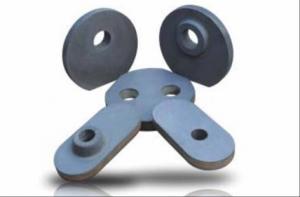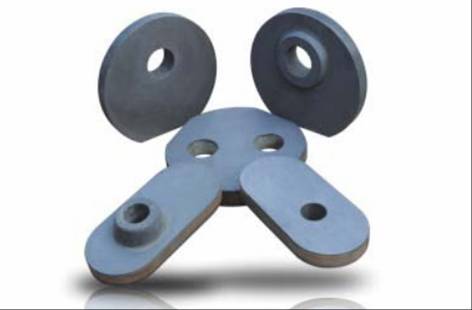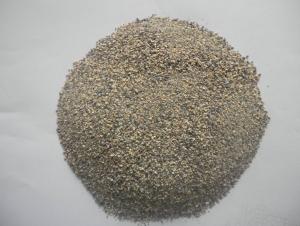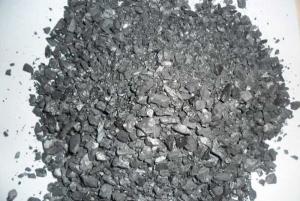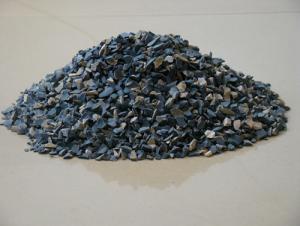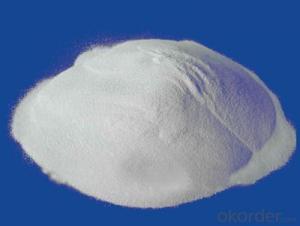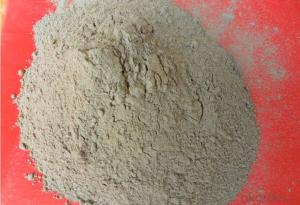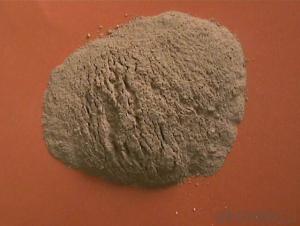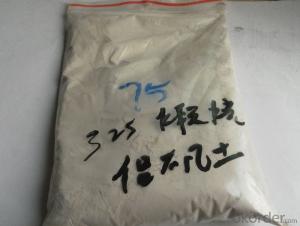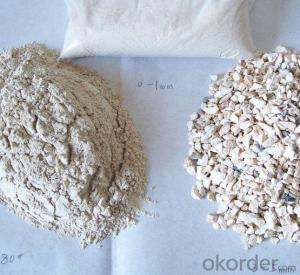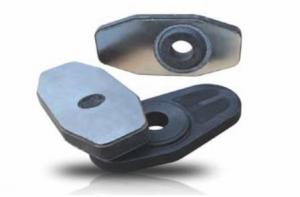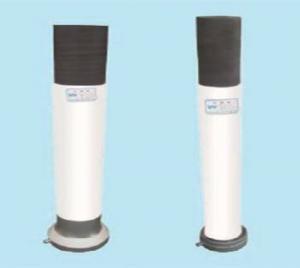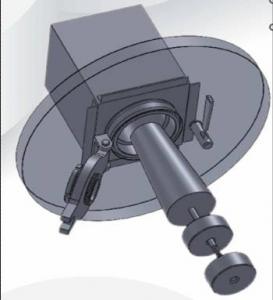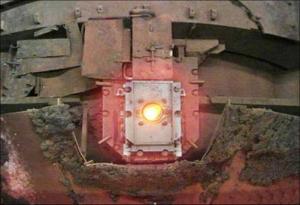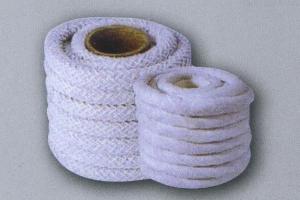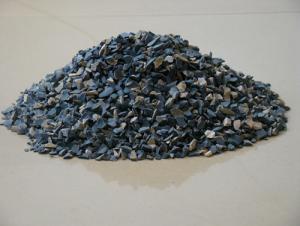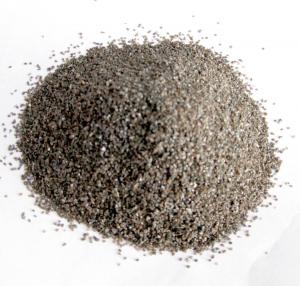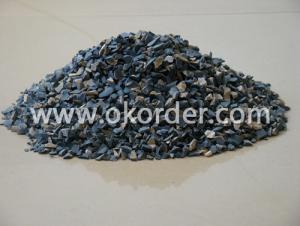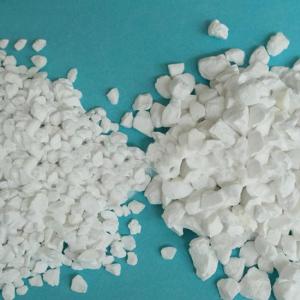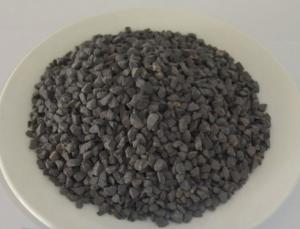Raw Materials for Refractory Sliding Gates Shape
- Loading Port:
- China Main Port
- Payment Terms:
- TT OR LC
- Min Order Qty:
- -
- Supply Capability:
- -
OKorder Service Pledge
OKorder Financial Service
You Might Also Like
Sliding Gates
High temperature sintering sliding gate
Using the raw materials of tabular alumina, zirconia-corundum, carbon and other high-grade additives, after sintering to obtain characteristics of oxidation resistance, scour strength, erosion resistance, thermal shock resistance, shape stable and long service life, made our products the preferred materials for the large and medium-sized steel ladle, refining ladle, series of alloy steel ladle, and tundish. Our high performance sintering sliding gates include alumina carbon , Al2O3-ZrO2-C, etc, can meet the needs of different steel grade.
Metal bonded unburned sliding gate
This kind of sliding gate importing special metallic additives, which generate the phase has excellent high temperature performance behavior in the process of using. The using effect on the large and medium-sized steel ladle and the tundish is good.
Metal bonded unburned sliding gate has the following characteristics:
Sliding gate do not have carbon, there will be no carbon oxidation cause massive sgraffito surface, which is more suitable for low-carbon steel, ultra-low carbon steel and the casting of Stainless steel. Magnesia bonded sliding gate is particularly well suited for high calcium treatment steel, killed steel, rimming steel, etc. For special steel there will be no groove at the sliding zone.
Good thermal shock stability and cracks in using is small, guarantee the security of casting steel.
The use of the product performance is stable and the production cycle is short.
- Q: What are the materials of white firebricks?
- White refractory materials are generally divided into two types, namely, unshaped refractory materials and shaped refractory materials. Unshaped refractory materials, also called castables, is a mix of powdery particles of many aggregates and one or multiple adhesives. They must be stirred well with one or multiple liquids when in use, which has a strong liquidity. Unshaped refractory materials generally refers to firebricks. They have standard rules about their shapes and can also be processed temporarily as needed.
- Q: What's the fire?retardant material of roller shutter fire resistance door ?
- I am happy to answer this question. Fire resistant rolling shutter door is generally filled with aluminum silicate fiber cotton inside. fire resistant rolling shutter doors are divided into special inorganic fireproof rolling shutter door and steel fire resistance rolling shutter door. The former has better fireproof?performance, but the later has certain wind load resistance and can be installed outdoors.
- Q: What are the applications of refractory busway?
- Refractory busway is designed for the power supply in fire-fighting equipment, and it can not be used for other purposes. As the generatrix has good heat resistance, thermal insulation, and the heat of the busway can not be emitted, it can not be used long-term at full capacity. In addition to fire-resistant busway, other bus lines can be operated long-term at full load.
- Q: Development trend of refractories
- Mullite Matrix clinker. There are higher requirements of kaolin and refractory annded life, it should be able to grind medical industrial raw materials alumina, vacuum extrusion molding, high temperature roasting and smelting from unshaped refractory material a good thermal mechanical properties in the kiln and has good application prospect; 2, Dong Qingshi clinker. With kaolin and magnesia as raw materials, wet grinding, vacuum extrusion, and then high temperature calcination, furniture has a very good prospect; 3, magnesium calcium sand. Because of the development of clean steel, low carbon steel, high oxygen steel and stainless steel, the basic importance of free calcium oxide refractories is supported; 4, fused eutectic composite. Bauxite based fused corundum, bauxite based fused mullite, bauxite based fused mullite zirconia, fused corundum zirconia fused zirconia, Magnesium Oxide and other materials have been developing rapidly; 5, high density spherical hollow mullite aggregate. The wall thickness of the shell of the 0.2 - 1.5 - 5 mm, diameter 40 mm, smooth surface, can not be uniform, spherical shell, this may be a double, a prominent part of the surface can be dense, can also be used for hollow casting material, not only can improve the insulation performance of the material, in order to reduce the volume density. Instead of destroying its strength.
- Q: how to divided the external wall thermal insulation materials fire rating
- Level A: Incombustible building material: It is a kind of material that almost does not occur burning. Level B1: Nonflammable building material: Non-flame material has good flame resistance. It is difficult to fire under the condition of open fire in the air or high temperature, and it is not easy to quickly spread, and when the combustion?source is removed, the combustion will stop immediately. Level B2: Combustible?building?materials: Flame material has a good flame resistance. In case of fire in the air or at high temperature, it will immediately burst into flames, and easily lead to the spread of fire, such as wooden column, timber roof truss, timber beam and wooden stairs. Level B3: Combustible?building?materials: It has no any flame resisting effects, and is easy to burn, so the fire risk is high.
- Q: The development prospect of fire-resistant material
- I also want to know, who can say, thanks all the way.
- Q: What is the type of heat resistance property of high temperature electric furnace ?
- According to the levels of refractoriness : Common refractories: & Gt: 1580 ℃ ~ 1770 ℃ advanced refractories: 1770 ℃ ~ 2000 ℃ AAA refractories; 2000 ℃
- Q: Can anyone tell me which materials are fire-proof high temperature resistant material?
- Fireproof high temperature resistant materials such as: Quartz, tridymite, cristobalite, chalcedony, flint, opal, quartzite, White silica sand, diatomaceous earth, the silicon oxide (SiO2) contained in these siliceous materials is at least 90% . The silicon oxide in some pure raw material can be above 99 %. Siliceous materials are acidic in high-temperature chemokinesis. when existing metallic oxide or contact with metallic oxide, they will conduct chemical actions and conbine into fusible silicates. Therefore, if the siliceous raw material contains a small amount of metal oxide, its heat resistance will be seriously affected..
- Q: what is the material of fixed first rate fire resistant window?
- Fixed first rate fire resistant window is produced by the steel sash windows, steel casement, fireproofing glass. Fireproof windows, is composed by steel window frame, steel casement, fire-proofing glass. it refers to the window which can isolate and stop the fire spreading. The fire window product is named after the main material of window frame and the window casement, window frames is made of steel, casement is made of wood or the sash frame is made of wood and the casement is made of fire window.
- Q: Which basic refractory is better?
- Zhengzhou Xindeyuan Refractories Co., Ltd.and Zhengzhou Rongsheng Kiln Refractories cO.,Ltd. Their basic refractories mainly refer to refractories with magnesium oxide and calcium oxide as main components what can resist errosion of basic slag, including magnesia bricks, magnesia-alumina bricks, magnesia-chrome bricks, dolomite?bricka and so on(magnesia bricks), among which magnesia bricks is the most common. Magnesia brick containing more than 80% to 85% magnesium oxide, has good resistance to basic slag and iron slag, and higher refractoriness than clay and silica brick. It is mainly used for open-hearth?furnace, oxygen-blown converter, electric furnace, ferrous metal smelting equipment and other high temperature equipments.
Send your message to us
Raw Materials for Refractory Sliding Gates Shape
- Loading Port:
- China Main Port
- Payment Terms:
- TT OR LC
- Min Order Qty:
- -
- Supply Capability:
- -
OKorder Service Pledge
OKorder Financial Service
Similar products
Hot products
Hot Searches
Related keywords
